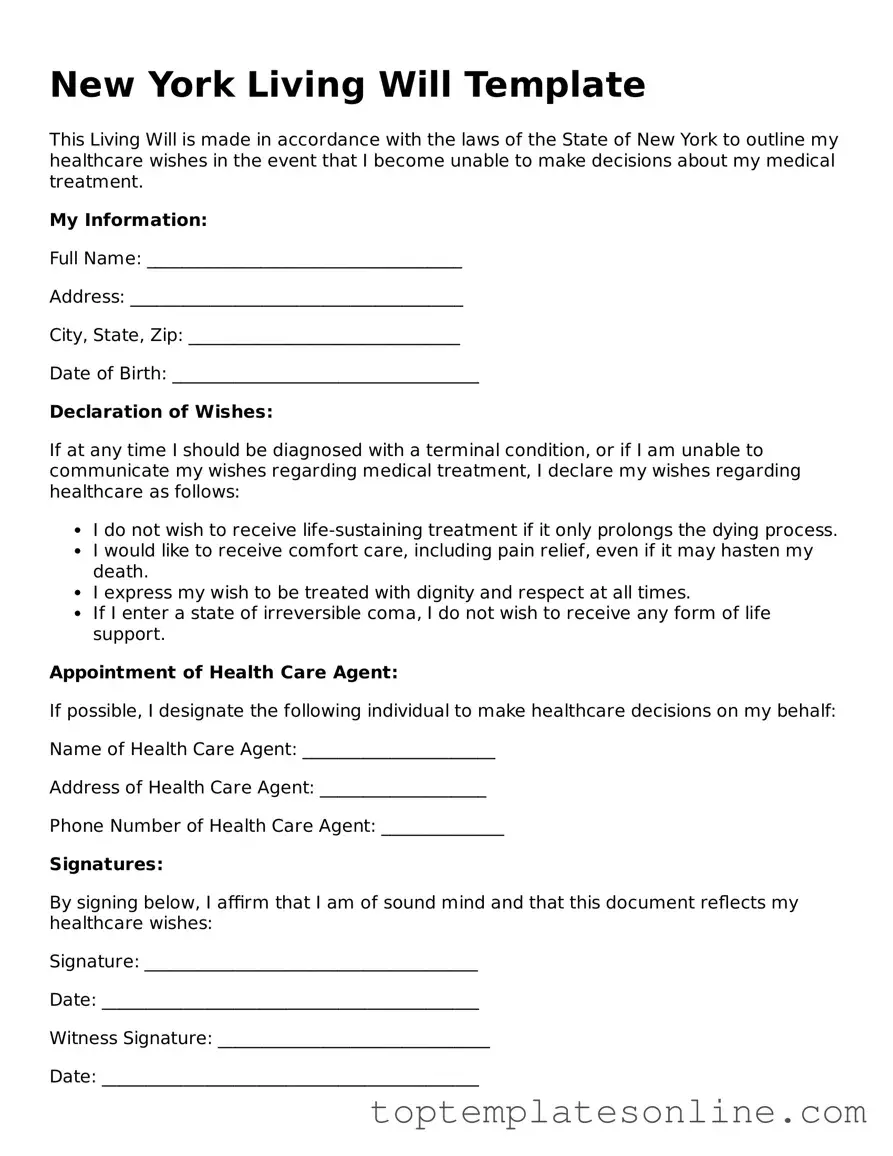Blank Living Will Template for New York State
A New York Living Will form is a legal document that allows individuals to express their preferences regarding medical treatment in the event they become unable to communicate their wishes. This form plays a crucial role in ensuring that healthcare providers respect a person's choices about life-sustaining measures. By clearly outlining these preferences, individuals can relieve their loved ones from the burden of making difficult decisions during challenging times.
Customize Living Will Here
